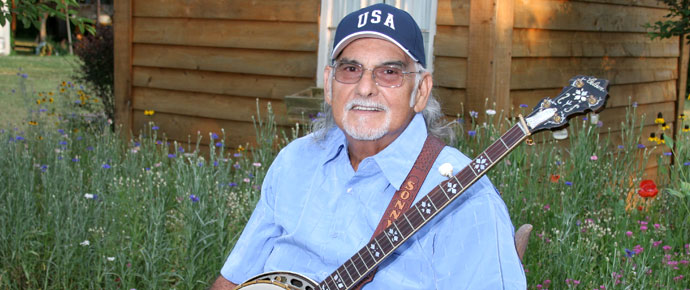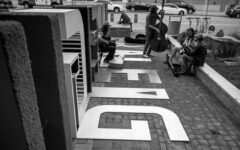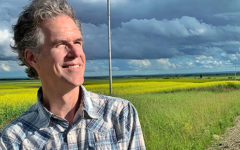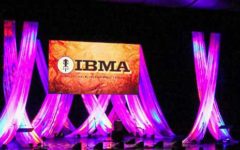
Ask Sonny Anything is a recurring feature where our readers pose questions to the great Sonny Osborne, one half of the iconic Osborne Brothers who redefined bluegrass music in the 1960s, and noted banjo maven and collector of fine prewar instruments. Everyone is encouraged to pose queries of your own each week in the comments, about his history in the music, his wealth of banjo knowledge, or regarding any life advice you might be needing.
Chief,
Can you tell us about the recording of Gal You’ve Got A Job to Do? How did the song come about?
Jarrod C
Jarrod…come on in hyer boy…who wrote Gal You Got A Job To Do? Sorry to say I don’t know and couldn’t find out. I can tell you it was recorded in 1968 at Bradley’s Barn Studio and it was sent to, and given to us by Teddy Wilburn. I was asked to use a sort of black dialect which I regretted. It’s poking fun at someone for the way they talk, if you’ve ever heard me talk, my God they oughta be making fun of me.
I got to thinking about that after it was recorded, however, once it goes on tape you don’t have any more to say about it, or at least that’s how it was inn 1968. Consequently, we never performed that song. I’m sorry I did it the way I did!
S
—–
Sonny, I’m from Georgia but living in Breathitt Co, KY. I noticed you always call your close friends “Brother.” Just curious, is that a Masonic reference? Love y’all’s music. It’s a part of my life.
Tommy
Tommy….come in and park right over here…Thank you for asking. Calling friends Brother came originally from a great friend and follower named “Cadillac Jack Collins.” Always drove a sharp Cadillac and followed us around. He called Bobby brother…always referred to Bobby as “BROTHER.” It just started with Jack and eventually everyone in our band started referring to Bobby as Brother. Including me. It’s not a Masonic, or anything else related to anything. I kinda like it, so I’ll keep right on as long as no one is offended….in that case, I’ll just keep on doing it.
S
—–
Sonny:
In the modern era of banjo equipment a player has the choice of hundreds of different products from bridges, to strings, to capos, to heads, etc. Could you comment on what was available when you started to play professionally? I have heard that playing with a hide head makes it difficult to keep the banjo in tune. What kind of banjo equipment did you use back then, and what was available? I have heard that you could even buy banjo strings in drug stores back in the day. Did you ever struggle to find strings or break a string and not have a replacement and have to use one of Bobby’s mandolin strings?
Thanks, Mike
Mike. Thank you for joining us. You are correct, this day and time, people who want to learn to play have everything a person would need to become a great player, if they want to apply the time. Back in the day, not so. We had nothing but Gibson ropes and Rogers 3 star heads…which were a complete pain to even try and have your banjo sound half way decent.
It seemed as though one degree of temp change would have an astounding affect on that very expensive 3 star head. Grover bridges was about it, until Silvio Feretti in Italy (builds great banjo bridges), Remo and KRAKO, saved the day. Don’t laugh, Derek Vaden (Larry Stephenson Band,) Lincoln Hensley, Lizzy (Elizebeth) Long (Little Roy and Lizzy). They’re playing Krako. They are good banjos. Don’t look like much but will sound better than anything since 1934. I just had to say that.
I digress…sorry. The plastic head arrived…must be ’60 or ’61. Earl told me that a feller would never have to buy another head, which was about the truth. We had Gibson, Black Diamond, Mapes, and a couple more for strings. On Sunday if you broke one and couldn’t tie it back, you got out to find a drug store and get a set of Bell Brand Strings. Yep, a drug store. We guessed at the tightness (No drum Dial) of that $26.00 Rogers head, sometimes lay the banjo in the back window so it could get dry from the sun. Gibson Mastertones were selling for as much as $75.00…that’s true, I paid (my Dad) $125 for one…later Butch paid $5700 for an RB 4. I’ve heard of one now priced at 1.2 mil. The times they are a changing.
—–
Hi there Sonny.
I remember a while back you had said you’d get into discussing the symphony work that the band did at some other time. …is now a good time? I’m curious as to how that all started and any other bits of info you’d like to pass on.
It’s always a pleasure hearing what you have to say.
Ayns
Ayns…thank you for your time. Folks…Aynsley Porchak is a great fiddle player. Ayns, Lincoln Hensley, and Lieutenant Dan Boner are playing some great East Tennessee Bluegrass Music.
Now is as good as any to tell my gruesome story. It all started back in ‘22, yep it’s all coming back to me now…. I was born in ‘37…no, forget all that. The whole orchestra idea came from The McClain Family Band. They were to do a date in Indianapolis with the symphony, and I was just full of curiosity on just how that worked, and how I could apply that to The Brothers. Understand though, I had NO idea of the amount of protocol that was involved…but it was so intriguing to me, and a huge challenge, that after seeing the crowd and the response they received, I just had to check it out.
I called Raymond and set up a meeting with the McClains, and off I went to their home in Berea Kentucky, with about 100 questions. They were kind enough to tell me what I needed to know. I contacted Buddy Spicher, and he in turn contacted Chris Wilkenson, both who were former members of the Nashville Symphony. I’m making a very long story into a much shorter one. We had a meeting in which all was explained to them both, and they agreed to write the music for 7 songs…actually it’s called The Score. This is such a complex ordeal…if I told you all of it you wouldn’t continue reading…I would venture to say that half of you have already went about doing something else. Oh well. IT says ASK ANYTHING.
Then, I called Geoff Berne and asked him to be our “Symphony Agent.” So, a bunch of rehearsals with our band and Buddy/Chris and dozens of problems solved. All except one monster…. None of us read music…Bad news…so you improvise…right? So I did. It was at this point that it dawned on me just how sharp the conductor had to be. See, each member has what he plays…and we’re talking about 50-100 people. The conductor guy must know all the parts and be able to ….never mind that…just ..Keep in mind that if you make one blunder then you have what they call “A Train Wreck!” So we had a deal.
I devised a system where I counted the number of banjo licks between line one and two, nodded to Bobby, he watched me so he would come in at the right time, the other guys watched Bobby and so they knew when to come in. So, we’re ready to try it out though scared shitless! (I bet you know how that is.)
We did about 20 of these dates from children’s orchestras to San Antonio, Texas. The real deal. Man, they were good. James Saderas was the MAN. Conductor. The violin section was right behind me. In rehearsal, when we started playing, they giggled. I took it as long as could. I stopped and verbally unloaded on them. I ended the profanity laced tirade by saying “when you make a record that becomes a state song and 6 million people buy the record, then you M….f…..ers may laugh, until then, shut the f…up and work at doing your jobs!” They looked at Mr. Saderas and he said, “Don’t look at me…shut the f… up and do your jobs…tap tap..LINE 21!”
When Blaine Sprouse and JD Brock finished their rendition of an electric bass solo, and then Blaine killed ‘em with The Orange Blossom Special, this bunch that giggled…. and the audience, stood…the next night at the performance. So we figured that was a good place, there in sight of The Alamo, to call a close to that experiment.
Wait, we had one more on the books to do. That would be Owensboro, Kentucky. Heavily promoted. I was told that we had 18,000 souls there that night. I know that standing on the stage you could look left and see people, look in front of us and you could see more people, then look to the right and you saw more people. I know, there was a bunch of folks there that night. Wish you could have been there! Hit was a site, brother…I sware hit wuz!!!!!
Oh, one other thing I wanted to tell you is how we did our show. We were to do 45 minutes. We had 7 songs written. We went on and played a few, then did one or two with the orchestra…then a couple more alone. And more of the same ending with Rocky Top. Man, I was glad that phase was over.
S
If you have something you would like to ask Sonny, be sure to post it in the comments below, or send it to us directly







